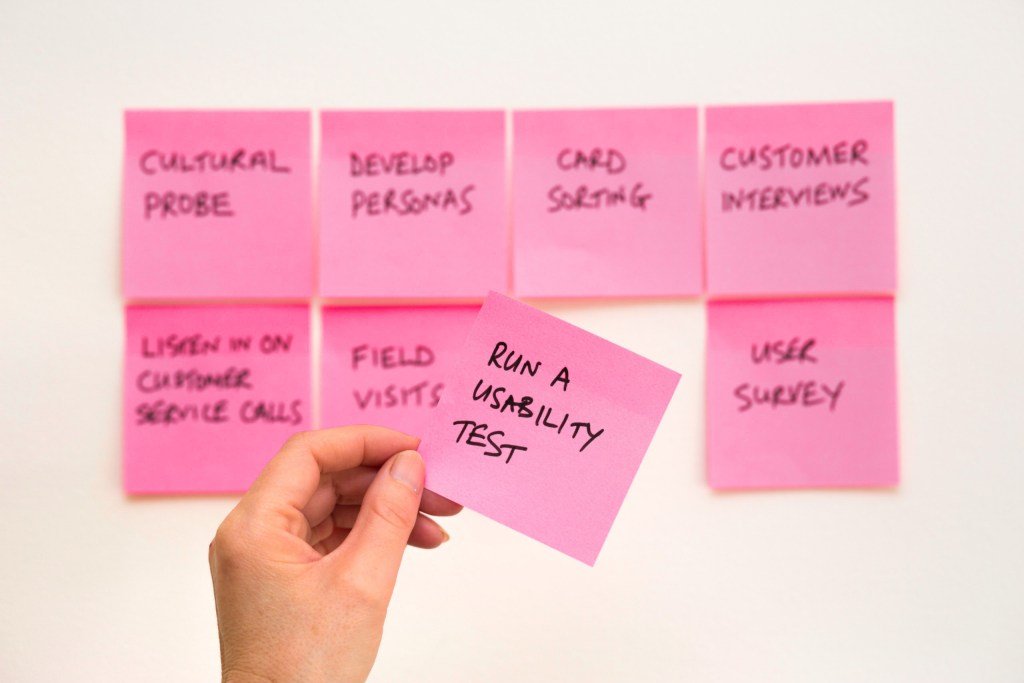Paper Prototypes for User Testing
Paper Prototyping
Paper prototypes are generally low-fidelity sketches of the different user interfaces needed for a mobile app or website. Since they are simple and easy to replicate, they can be rapidly designed, simulated, and tested. In addition, changes to the product design in the early stages of paper prototyping are much faster and inexpensive than software and high-end prototypes.
Photo by Hal Gatewood on Unsplash
An iterative design process allows designers to include more diversity in the product design before the process reaches a more expensive stage. In fact, frequent changes to the paper prototypes give each possibility more opportunities for critical feedback from potential users during usability testing.
Usability Testing
We observe how different users respond to paper prototypes by giving them a short series of tasks in usability testing. A usability test aims to analyze a product design with a representative group of users. Thus, it's important to ensure your participants match closely with your target audience so you can better identify which design aspects work and which don't.
Usability tests help designers determine if a typical user could accomplish a goal and identify how well users can move from step to step in a typical use case. These factors aid in establishing critical changes to the product design to improve the user experience and product performance.
Photo by David Travis on Unsplash
Nonetheless, usability tests don't require any specific study conditions. In fact, it's often better to run any testing you can with the resources you have at hand than not to perform any testing. Furthermore, the earlier you begin user testing, the more feedback you can use to adjust designs and address issues in the paper prototyping stage. This way, you won’t be facing preventable challenges in the more expensive stages.
The most effective usability tests last from thirty to sixty minutes for each participant. Most participants will get bored, distracted, or irritated beyond that one-hour timeframe. If possible, it’s best to conduct multiple usability tests throughout the design process.
Photo by UX Indonesia on Unsplash
For the user testing to go smoothly, you should create a plan that establishes what you will test, how you will test it, how you will measure and capture it, and what scenarios you will use. Thorough planning ensures that testing remains consistent for individual participants, not affecting the results. Ask yourself what you hope to learn or gain from user testing and identify who you want to test. You should also identify the criteria you’d like to utilize for user recruitment.
Ensure you provide sufficient buffer time between user tests if a participant is late or the testing lasts longer than planned. Also, it's helpful for teams to discuss their observations after each test. Make sure your team can capture the testing somehow, ideally with video to record the participants’ comments, hesitations, and facial expressions. However, make sure you have written consent from the participants before recording.
Creating a Script
Usability testing relies on a script to maintain focus and consistency between tests. This script tells participants what you're testing and why you're testing it, and establishes specific scenarios. When writing your script, it helps to begin with a preamble to assure participants that you are testing the product and not them. This puts the users at ease, so they can focus on completing tasks in each scenario. Reassure the user that there are no wrong answers and any issues during the test are the product's fault. You should also ensure the participants understand you intend to observe and/or record the test, and you won't offer guidance during the tasks. The remainder of the script is the main body of the test and establishes typical use cases.
Writing Efficient Scenarios
Before you begin writing scenarios, you need to identify the main goals your target users need to accomplish. Ask yourself why those users would want to use your product. When you start creating scenarios, remember each test will only have a certain amount of time. Be realistic with the amount of time each scenario could take. Provide a realistic context for each scenario so the participants can associate with the tasks at hand.
Your scenarios should include a call-to-action to clarify what the participants need to do to complete a task. Identify what actions they should take to complete each step of the primary task. Participants also need to know when they successfully completed a task to understand they traversed the right steps. On the other hand, avoid terms used on the product's interface, so the scenarios don't bias participants' behavior.
Photo by Alvaro Reyes on Unsplash
After you've written your task scenarios, go through each one and denote the steps each participant will need to take to accomplish each task. The total number of individual steps shouldn't be too short or too long, and five to seven steps are ideal.
Conducting a Usability Test
When conducting a test, follow the script as closely as possible. Avoid offering participants guidance during the test so you won’t interrupt the participant’s flow. Your primary goal is to observe how they react to the provided tasks. For best results, ask participants to verbalize their thoughts throughout the process. Also, reassure them that any issues during the test are the software’s fault, not their own.
Owasso Companion User Testing
The Owasso Companion is a mobile companion app for the city of Owasso’s website. The city is community-oriented so the app’s design incorporates on-the-go information about the community and resident services. To create a POP (prototyping on paper) model, I uploaded images of my paper prototype to Marvel and marked “hotspots” through the software.
In total, there were two participants with three scenarios in the user testing. Both users successfully completed the second task swiftly and successfully.





